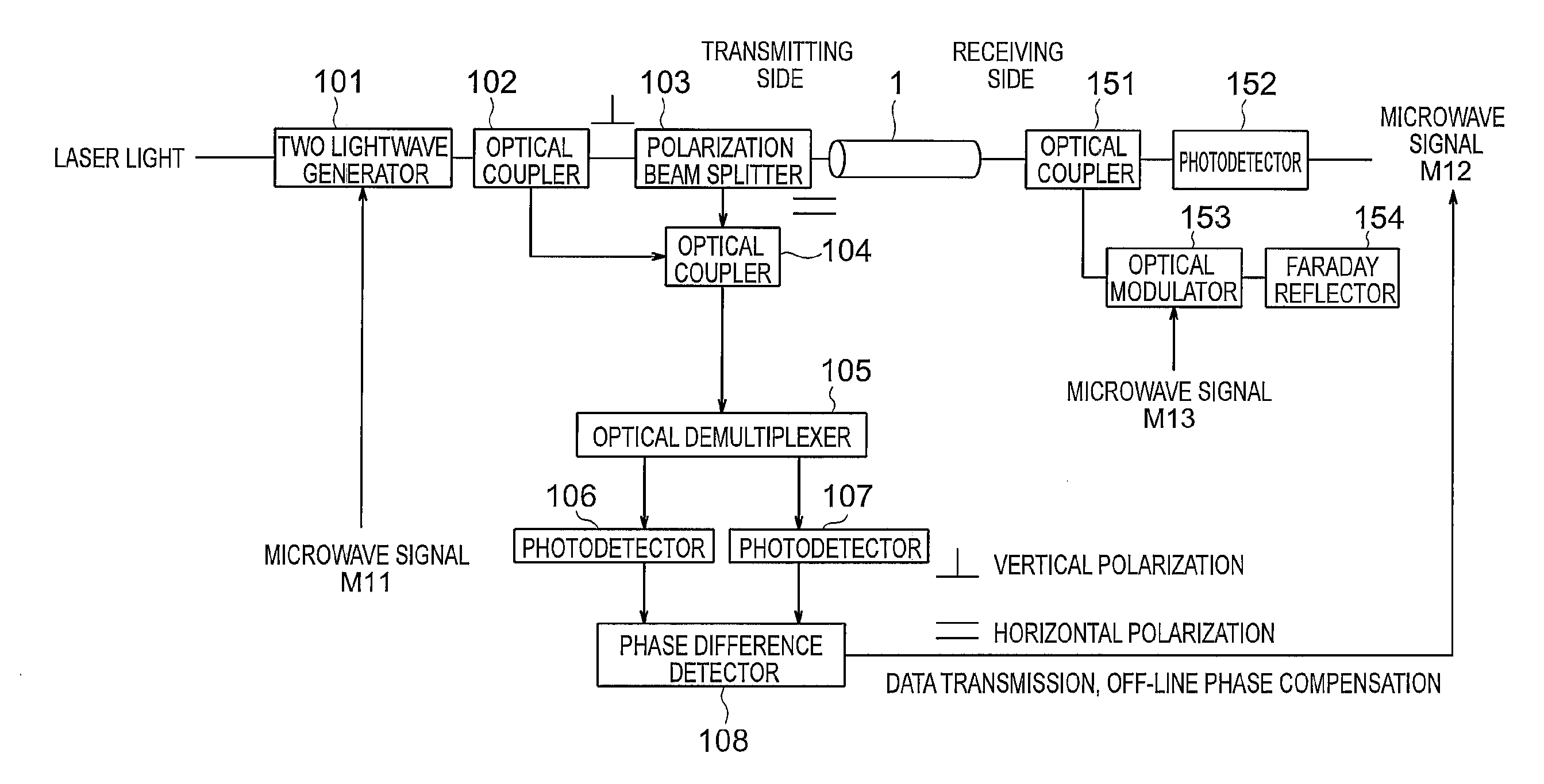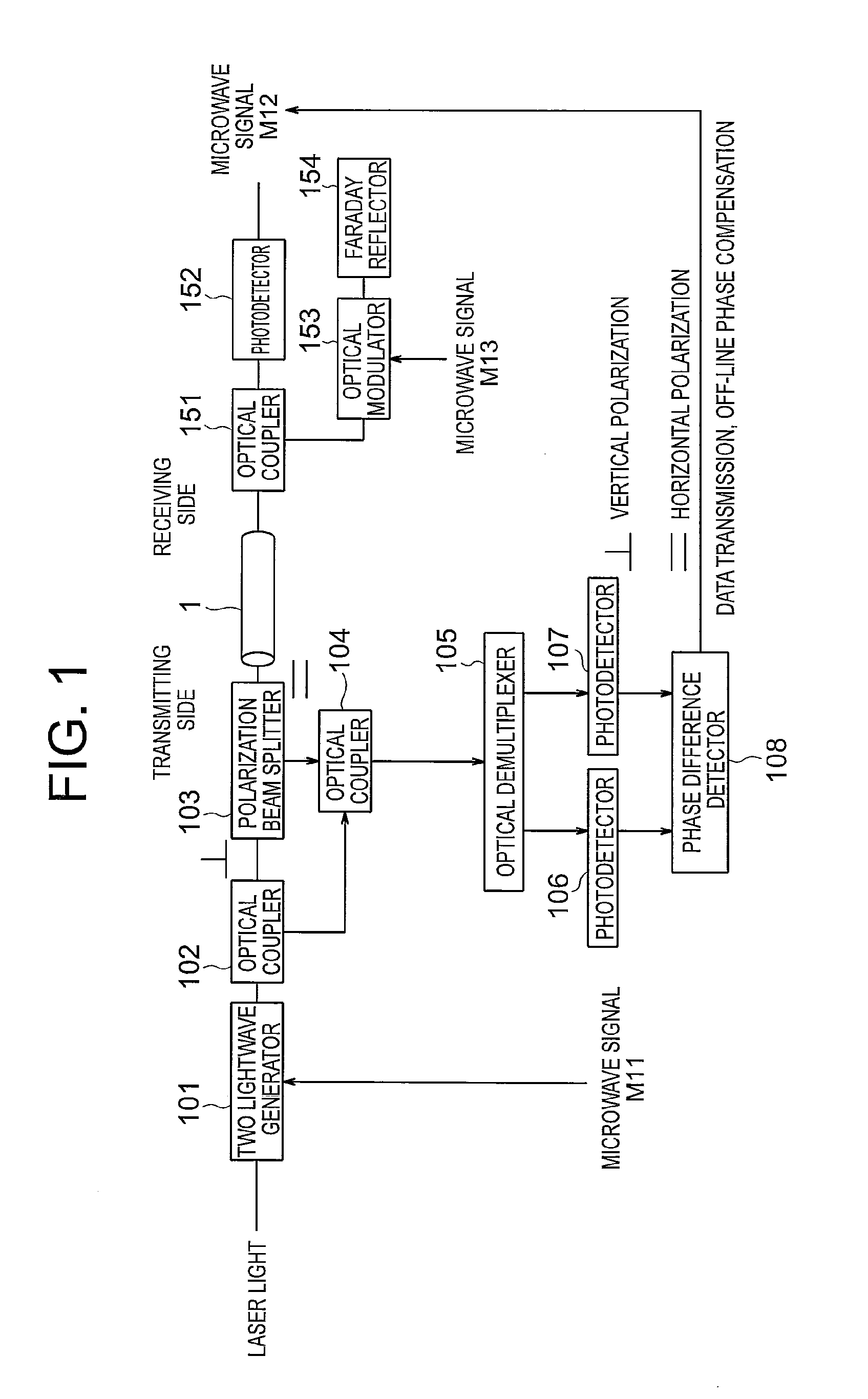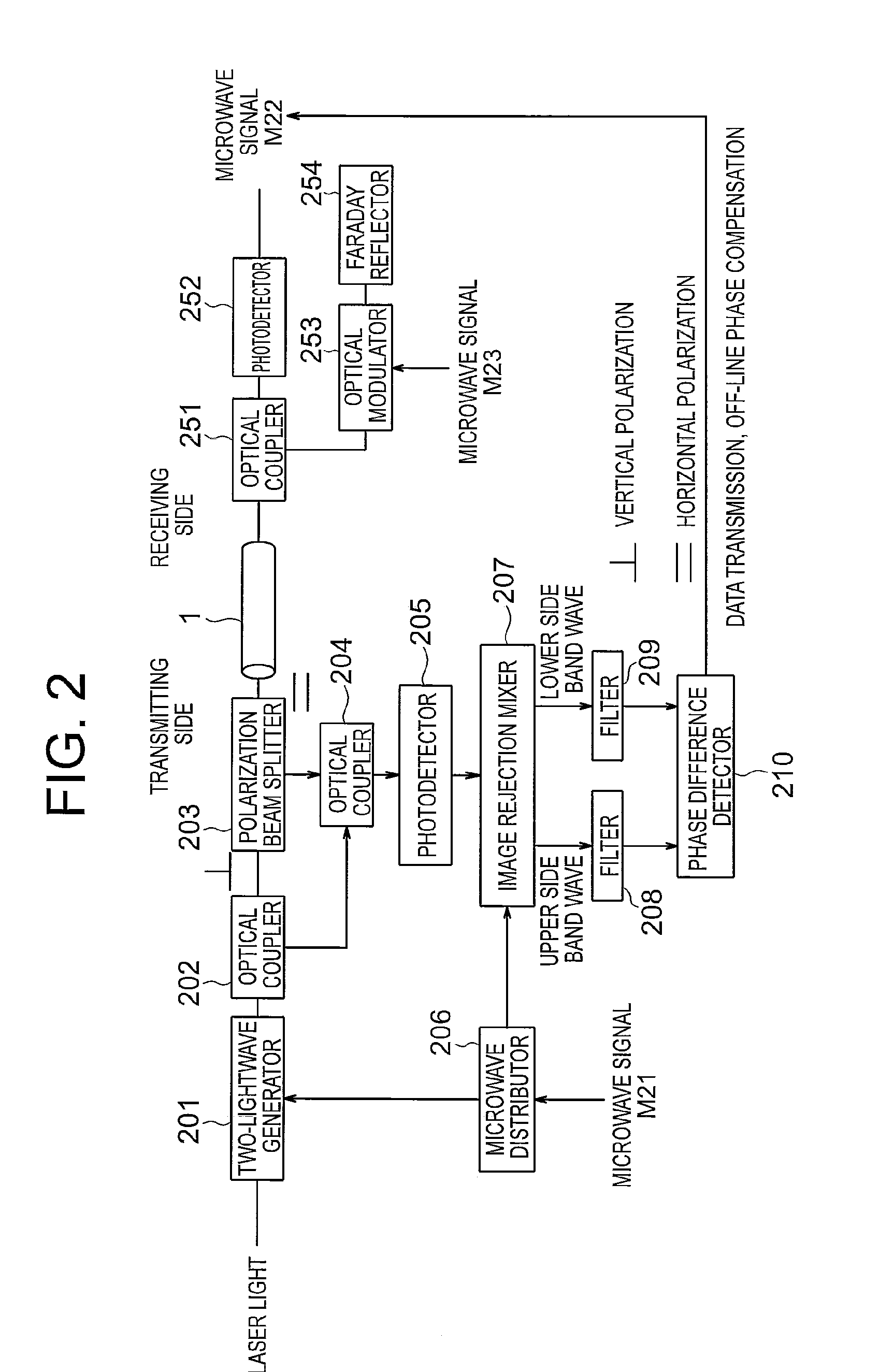Optical transmission system and optical transmission method
a transmission system and optical transmission technology, applied in the field of optical transmission systems and optical transmission methods, can solve the problems of increasing signal loss, affecting affecting the quality of transmitted signals, so as to improve the phase stability of transmitted signals, simplify system configurations, and reduce signal loss
- Summary
- Abstract
- Description
- Claims
- Application Information
AI Technical Summary
Benefits of technology
Problems solved by technology
Method used
Image
Examples
first embodiment
[0021]FIG. 1 is referenced to describe an optical transmission system according to a first embodiment of the present invention. FIG. 1 is a diagram illustrating a configuration of the optical transmission system according to the first embodiment of the present invention. Note that, hereinafter, the same reference symbols within the respective drawings indicate the same or equivalent components.
[0022]In FIG. 1, the optical transmission system according to the first embodiment of the present invention is provided on a transmitting side with: a two-lightwave generator 101 for generating two coherent optical signals (having wavelengths λ1 and λ2) having different wavelengths from each other from laser light that has been input by using a microwave signal M11; an optical coupler 102 for distributing the two optical signals; a polarization beam splitter 103 for passing vertical polarization light between the optical coupler 102 and an optical fiber 1 and passing horizontal polarization li...
second embodiment
[0037]FIG. 2 is referenced to describe an optical transmission system according to a second embodiment of the present invention. FIG. 2 is a diagram illustrating a configuration of the optical transmission system according to the second embodiment of the present invention.
[0038]In FIG. 2, the optical transmission system according to the second embodiment of the present invention is provided on the transmitting side with: a two-lightwave generator 201 for generating two optical signals (having wavelengths λ3 and λ4) that differ from each other by a frequency of a microwave signal M21 described later; an optical coupler 202 for distributing the optical signals; a polarization beam splitter 203; an optical coupler 204 for mixing the optical signals; a photodetector 205 for converting the optical signals into microwave signals; a microwave distributor 206 for distributing the microwave signal M21; an image rejection mixer 207 for frequency-converting the microwave signals from the photo...
third embodiment
[0053]FIG. 3 is referenced to describe an optical transmission system according to a third embodiment of the present invention. FIG. 3 is a diagram illustrating a configuration of the optical transmission system according to the third embodiment of the present invention.
[0054]The optical transmission system according to the third embodiment of the present invention is a combination of the above-mentioned optical transmission systems according to the first and second embodiments, and FIG. 3 illustrates a configuration that supports a multichannel and a simultaneous operation of the high-frequency signal and the low-frequency signal.
[0055]In FIG. 3, the laser light (having a wavelength 1 (λ1 and λ2)) indicated on the upper stage and the laser light (having a wavelength 2 (λ3 and λ4)) indicated on the lower stage are different from each other in optical wavelength. In the configuration that supports the simultaneous operation for a high-frequency signal and for a low-frequency signal, ...
PUM
 Login to View More
Login to View More Abstract
Description
Claims
Application Information
 Login to View More
Login to View More - R&D
- Intellectual Property
- Life Sciences
- Materials
- Tech Scout
- Unparalleled Data Quality
- Higher Quality Content
- 60% Fewer Hallucinations
Browse by: Latest US Patents, China's latest patents, Technical Efficacy Thesaurus, Application Domain, Technology Topic, Popular Technical Reports.
© 2025 PatSnap. All rights reserved.Legal|Privacy policy|Modern Slavery Act Transparency Statement|Sitemap|About US| Contact US: help@patsnap.com



